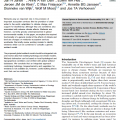Improved BioScore to map wetland plant distribution across Europe
Wetlands are vital ecosystems, home to a unique and often fragile biodiversity. Yet they are increasingly under pressure from drainage, agricultural expansion, and climate change. Understanding how wetland species respond to environmental changes is crucial for guiding effective conservation and restoration efforts. To that end, species distribution models (SDMs) can be powerful tools; however, many SDMs for wetland plants have had significant limitations to date.
In this new study, we developed and validated SDMs using the BioScore modelling framework (a sister model of GLOBIO) for 265 wetland plant species, including both vascular plants and mosses, across Europe. What sets our work apart is a more comprehensive set of environmental predictors, including climate, soil, hydrology, and human pressures, as well as the inclusion of mosses, which are often overlooked in such models despite being key components of wetland ecosystems. The SDMs were evaluated in several ways, including cross-validation and independent datasets. We also further evaluated the ecological relevance of the model output. We found that climate variables, especially the mean temperature of the coldest month, were the most important predictors for most species. Interestingly, groundwater table depth was a strong predictor for diagnostic vascular plants but not for mosses. Suggesting different sensitivities to hydrological conditions across taxonomic groups.
What does this mean for wetland conservation? These models provide a valuable tool for predicting where characteristic wetland species are likely to occur and how their distributions may shift in response to climate and land-use changes. However, to better capture local hydrological complexity, especially in small or heterogeneous wetlands, alternative variables or refined modelling approaches may be needed. By expanding the spatial and ecological scope of wetland SDMs, especially through the inclusion of mosses, this work provides a stronger foundation for biodiversity assessments, conservation planning, and future environmental forecasting across Europe’s wetlands.

![]() Link to BioScore model website
Link to BioScore model website
Authors: Ojaswi Sumbh, Marjon Hellegers, Valerio Barbarossa, Renate Ćušterevska,, Borja Jiménez-Alfaro, Łukasz Kozub, Francesca Napoleone, Zvjezdana Stančić and Aafke M. Schipper




